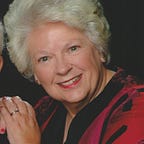Tossing and Turning
I couldn’t get to sleep all night.
Sleep is essential — the average working-age American needs at least seven to nine hours every night. Children need more according to age, and seniors need less — about seven to eight hours.
A whole night’s rest, in which the sleeper goes to bed and stays asleep, helps men and women deal with daily stresses, but every minute of waiting awake has negative repercussions. Waking to go to the toilet (nocturia) can be prevented.
Nocturia
Nocturia, or the frequent need to urinate at night, is believed to be associated with depression, weight gain, heart disease, and diabetes. Forty percent of people with nocturia have difficulty falling back to sleep. Life changes can alleviate frequent bathroom visits.
- Limit liquid (water) intake at night.
- Reduce caffeine and alcohol.
- Talk to your doctor about when to take certain medications.
- Strengthen your pelvic wall with specific exercises.
1. Pelvic Tilt
2. Medicine Ball
3. Wall Sit
4. Dead Bug Crunch
5. Bird Dog
6. Kegels - Elevate or compress your legs.
- Practice good sleep hygiene.
Women are 40 percent more likely to have insomnia than men and twice as likely to grapple with anxiety and depression.
Women encounter specific factors, including hormonal changes related to menstruation and menopause and pregnancy, and postpartum health. These live stages can trigger sleep issues like obstructive sleep apnea, back pain, fibromyalgia, and restless legs syndrome.
Men have higher rates of heart disease and chronic lung problems.
Drinking alcoholic beverages affects the sleep cycle.
Snoring
Snoring is a sign of sleep apnea. Snoring in both men and women is a sign the airflow is blocked or restricted. Nearly 90 million Americans snore to some degree at night. A man’s air passages are narrower than a women’s, resulting in more night noise.
Sleep Apnea
Sleep apnea is a potentially serious sleep disorder in which breathing repeatedly stops and starts. A sleep doctor will provide a sleep test and prescribe the appropriate action.
1. Obstructive sleep apnea
2. Central sleep apnea.
3. Treatment-emergent central sleep apnea.
Why do I have difficulty sleeping?
After two separate visits to the sleep clinic, it has been decided my sleep is disrupted by restless leg syndrome, sleep apnea, and depression.
What can I do about it?
The doctor prescribed six weeks of biofeedback, where I learned to perform specific exercises.
I take a drug named Pamlipixal which helps control restless leg syndrome.
I should use a C-Pap Machine to help with obstructive sleep apnea.
What do I want to do?
I want the easy way out. I like the doctor to prescribe a specific sleeping pill, but that’s a topic for a different paper.
